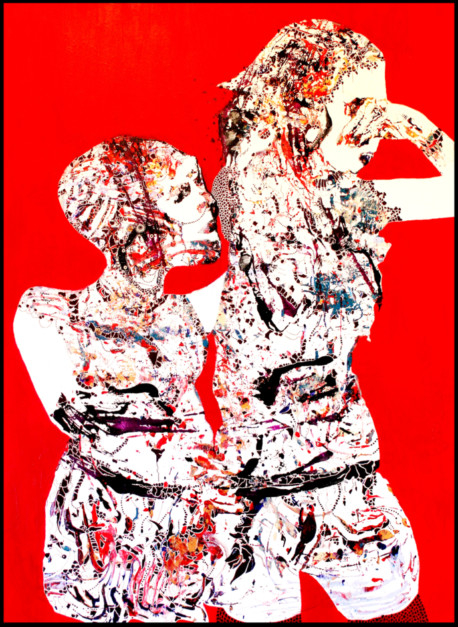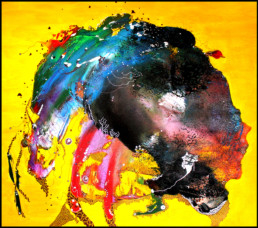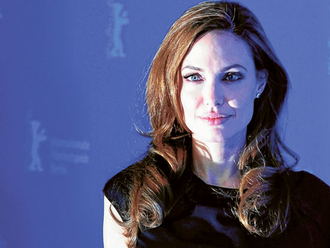
Hesham Malik’s latest exhibition in Dubai, Ilat, is inspired by Africa. But rather than depicting stereotypical imagery of the African landscape, tribes and wildlife, the artist has tried to convey the philosophy of life of the African people.
Malik, who is of Indian origin, was born in Bahrain, grew up in India and Dubai, did his higher education in Canada and now lives in Prague. But his interest in Africa motivated him to make several trips to Kenya and Tanzania, where he interacted closely with the Samburu, Masai, Gusii and other tribes.
His colourful, textured, abstract figurative paintings are based on the mythological stories he heard from tribal elders, and they capture the essence of the beliefs and traditions that guide the lives of these people.
“I had read a lot about Africa, but I knew that I needed to have personal experience of the culture to bring it alive on my canvases. My first trip was disappointing because it was restricted to the typical tourist sites. I then contacted an institution in Kenya that arranged for me to travel far away from the city with an interpreter and interact with a tribe comprising a few families.
“I spent several days with them, walked long distances with them as they moved camp in search for fodder for their cattle, and listened to the stories of the village elders about their beliefs and traditions. I realised that the reality of their existence is quite different from what I had read in books or is shown in tourist brochures. I was keen to learn more about their way of life and about other tribes, and so made several such trips to Kenya and Tanzania, before I felt confident to begin painting.
“This body of work is an amalgamation of everything I learnt about the core beliefs, customs, attire, culture, mythology and history of the various tribes I interacted with,” Malik says.
The title of the show, “Ilat”, which means rain, also comes from a mythological story. “I chose this title because this was the first myth I heard in Africa. According to the story, thunder was once a man, and when standing on a hill, he met a poor man, who shot a poison arrow at him, because thunder would bring fog which would hide the sun and prevent him from hunting. Frightened by the arrow, thunder fled to the sky; and the people believe that the sound of thunder is the noise he makes when he draws water from the lakes and spills it out as rain,” Malik says.
Each painting in the show is inspired by a specific tribal myth or tradition, and provides a deep insight into their unique perspective on life. In “Ekwuema” the man is seen crying, while the woman embraces him supportively. “These tribes do not consider it shameful for a man to cry in public. In fact a man is taught to release his pain and fear with tears, because they believe that once the tears leave our body we renew our energy and can move ahead in life. The women do not view this negatively. They are calm and patient and try to understand the inner battles of their men and support them,” Malik explains.
Many of the paintings depict the strong belief the tribes have in their ancestors. “Zuberi” depicts an orphan whose wish to communicate with her parents is fulfilled by the ancestors, symbolised by a huge rabbit-like creature.
In “Hadithi” the reclining figure with legs pointed skywards is the artists version of a scarecrow-like creature created by the Samburu tribe to protect their land and cattle.
“It starts with two logs placed in a clearing. Every person in the tribe then adds different things such as some fabric or trinkets, so that the figure grows organically. The people believe that their ancestors send their energy from the sky into the figure through its upturned foot to protect them from intruders on their land,” Malik says. “One of the things that really struck me was their belief that life begins after they die, because then they join their ancestors in the sky and help them to guide their people down below. And I really wanted to bring this out in my paintings,” he adds.
Other works highlight tribal beliefs about love, marriage, greed, the good angel monkey, dark warriors, motherhood and the significance of music and dancing in every aspect of life. The colours and variety of textures in Malik’s paintings reflect the bright colours and environment of Africa. He has covered every figure with intricate patterns that are inspired by the body art and jewellery of different tribes.
“Like the tribal artists, I have used a porcupine quill to make these patterns,” Malik says.
“I have learnt so much from these people. But the best thing they taught me was to have gratitude in life. They believe that energy passes in a circle, and if you complain about your life, you pass on negative energy; whereas being thankful for small things such as every step you walk and every meal you eat creates good energy and takes you to a higher level of being,” he adds.
‘Ilat’ will run at Showcase Gallery, Al Quoz until February 28.
Remembering C.N. Karunakaran
The Fine Art Advisory, Dubai, is hosting an exhibition of paintings by eminent Indian artist C.N. Karunakaran. The show has been organised to commemorate the artist, who passed away in December 2013, by Art at India House at the Embassy of India, Abu Dhabi, and Deepa Seetharam in collaboration with the late artist’s family. The exhibition will run at The Fine Art Advisory from 6pm on January 25 until 6.30pm on January 26.
Jyoti Kalsi is an arts enthusiast based in Dubai.













